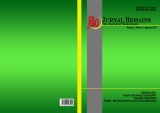KAJIAN ETNOBOTANI TUMBUHAN OBAT OLEH ETNIS MASYARAKAT DI DUSUN ARAS NAPAL KIRI DAN DUSUN ARAS NAPAL KANAN DESA BUKIT MAS KECAMATAN BESITANG KABUPATEN LANGKAT
DOI:
https://doi.org/10.24114/jbio.v2i2.4225Abstract
Based on this observation, thre are 42 species of beneficial herbal plant from 27 family grown in Dusun Aras Napal Kiri and Dusun Aras Napal Kanan, Desa Bukit Mas Kabupaten Langkat. The parts of plant usefully are leave (22 species or 47,83%), rizomes ( 8 species or17,39%), latex (4 species or 8,70%), seed (3 species or 6,52%), stem and root are each (2 species or 4,35%), and flower (only 1 species or 2,17%).The Javanese is the Etnis who use the most herbal plants (34 species) whilst Karo and Batakness uses 20 species and 19 species. The wealth of the herb can be used into 4 categories sch as Medecine (60,47%), Healthcare(30,23%), Beautycare (4,65%), and medicare (4,65%). Keywords: Ethnobotany, medicinal plant, Aras NapalDownloads
Published
Issue
Section
License
For Authors Jurnal Biosains agree to the following terms:
Authors retain copyright and grant the Jurnal Biosains (JBIO) right of first publication with the work simultaneously licensed under a Creative Commons Attribution License (CC BY-SA 4.0) that allows others to share (copy and redistribute the material in any medium or format) and adapt (remix, transform, and build upon the material) the work for any purpose, even commercially with an acknowledgement of the work's authorship and initial publication in JBIO (Jurnal Biosains)
Authors are able to enter into separate, additional contractual arrangements for the non-exclusive distribution of the journal's published version of the work (e.g., post it to an institutional repository or publish it in a book), with an acknowledgement of its initial publication in JBIO (Jurnal Biosains)
Authors are permitted and encouraged to post their work online (e.g., in institutional repositories or on their website) prior to and during the submission process, as it can lead to productive exchanges, as well as earlier and greater citation of published work (See The Effect of Open Access).


